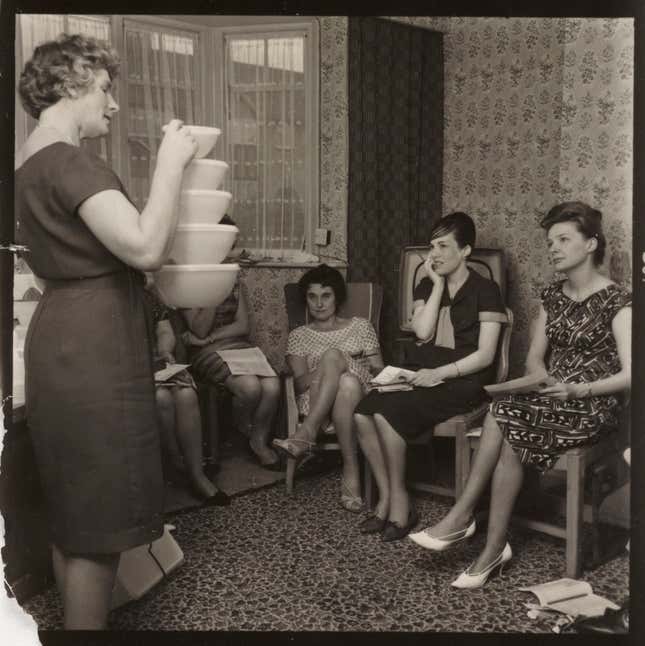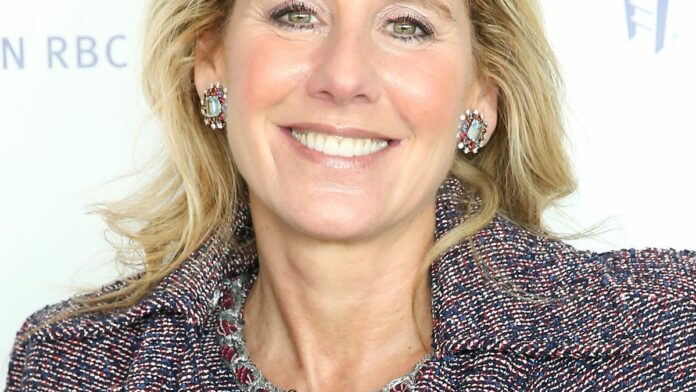Tupperware named Laurie Ann Goldman its new chief executive officer, president, and director on Tuesday (Oct. 17).
Goldman is known for her long tenure as the former CEO of Spanx, where she served for 12 years. She’s credited with transforming the shapewear startup into a global omnichannel retailer and a $1 billion unicorn.
Markets are liking the news. Tupperware stock partied up 18% to an intraday high of $2.49, a far cry from its low of 61 cents this year.
The food container giant has been through the wringer, barely surviving a tumultuous era that saw it run out of money, secure a lifesaving debt restructuring, and do a stint as a meme stock.
Goldman replaces Miguel Fernandez, who will also step down as a director. “Now is the right time to bring in new leadership, and Laurie Ann is exceptionally well-suited to advance our long-term strategy and accelerate growth,” Susan Cameron, chair of Tupperware’s board, said in a press release.
Goldman will be Tupperware’s second female CEO in 77 years
The Tupperware board appointed its first female CEO, Patricia Stitzel, in 2018. “Tupperware supports and works with an independent Sales Force of 3.1 million, 90% of which are women,” a press release lauded.
In just 18 months, Stitzel left.
Where grandmothers reminisce about fun times partying over Tupperware with the girls, the new generation thinks it’s just “bowls and tumblers,” Stitzel said.
“People just don’t have connection with the brand anymore,” she explained on an earnings call in October 2019. “And inevitably, when we talk to people about what products do we have and who we are and the innovation in our line, they have absolutely no idea.”
Given rising competition from other container companies like OXO and Rubbermaid, brand is no longer what keeps Tupperware afloat.
“[B]rand loyalty is really yesterday’s news. The prize today is brand advocacy. It’s not enough for people to love your product,” Goldman told Huffington Post in 2014. “We’ve entered the recommendation economy where people don’t believe marketing, they believe each other.”
While Tupperware dealers used to earn trust through intimate parties at their homes and via word-of-mouth, the landscape for trust has evolved dramatically. That word-of-mouth now comes from influencer marketing and social media.
Tupperware expanded its distribution channels to Target last year, a replay of a 2002 strategy that only lasted eight months.
It shows that the 77-year-old brand faces a struggle to move away from what used to work—direct sales. Until the Target partnership, Tupperware still relied on the “party” model, recruiting salespeople to sell to their network.
With a track record of bringing brand and products to stores, Goldman may be the woman who can change Tupperware’s antiquated ways.
During her famed tenure at Spanx, she led the company’s development of new intimate apparel lines and its expansion into swimwear, activewear, jeans, and even Spanx for Men. She helped make Spanx available at retailers including Neiman Marcus, Saks, Harrods and Selfridges, as well as at the larger Kohl’s, Target, and Liverpool chains.
Before Spanx, Goldman spent a decade with Coca-Cola, where she led its worldwide licensing division. She was also briefly CEO of New Avon, a cosmetics giant, before being pushed out after its 2019 sale to LG Household & Health Care. Most recently, she served as CEO of cosmetic treatment provider OVME Aesthetics.
Goldman perhaps hinted at her focus on retail partners in the press release announcing her appointment: “This is a tribute to the entrepreneurial and inventive spirit of the wonderful teams that sell and create Tupperware and its impressive retail partners.”
Tupperware sold by women, fronted by men
Those hardy food containers with a double seal were invented by an engineer named Earl S. Tupper in the 1940s. But Tupper, who launched his eponymous company in 1946, wasn’t good at selling his products.

A divorced mother named Brownie Wise had the ingenious idea to hold “Tupperware parties.” In just three years, annual sales surged to the equivalent of $275 million today. Wise was hired as the company’s vice president of marketing, an unprecedented role for a woman at the time.
By 1954, Wise had grown Tupperware’s marketing network to 20,000 dealers and distributors—rural, urban, Black, and white women—all hoping for a chance to move up in the world. Tupper wasn’t happy being overshadowed by a woman, and the two reportedly argued constantly over company strategy and management.
In the late 1950s, Tupper pushed to sell his business, firing Wise after a prospective buyer suggested it wouldn’t commit to purchasing a company with a woman executive. Wise sued and got a payout of $30,000.


